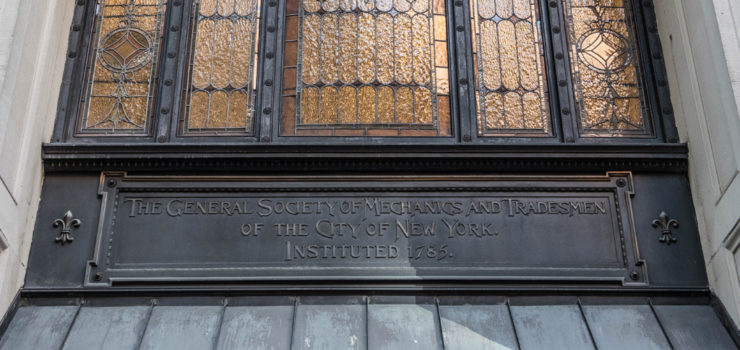The building at 20 West 44th Street in Manhattan ranks high on the list of historically significant places in New York City. It’s home to The General Society of Mechanics and Tradesmen, which began in 1785. As the name implies, it was founded by a group of mechanics, tradesmen, free thinkers and entrepreneurs who vowed to take care member’s widows and orphans.
Predating NYC’s public school system, The General Society opened one of the first free schools in the city, and virtually unheard-of at the time, they founded a separate school for girls later that year. Public schools became prevalent by the 1850s, and The Society converted its existing schools into a Mechanics Institute, where working adults could further their technical education.
That focus remains today, with The General Society offering free, evening education to men and women looking to improve their craft. Each year, roughly 350 students are involved with the various technical courses offered.
The organization, or rather the building it inhabits, is a living museum of labor, industry, engineering and innovation across many pursuits. Its library is the second oldest in The Big Apple. Over the years, The General Society has always served as a social hub. Its illustrious list of members includes names such as Andrew Carnegie, Alexander Campbell, and more recently, industry icon Dan Holohan.
Holohan, who became a General Society member in 2015, was initially invited to speak on the topic of steam heat at the Mechanics Institute. He jumped on the opportunity to share knowledge with a room full of “steam heads” (or aspiring steam heads) and also to take a tour of the building with The Society’s current Executive Director, Victoria Dengel. Few living people know The General Society as well as Dengel. Her parents were both involved with the organization, and she has spent many days in its marble halls since childhood.
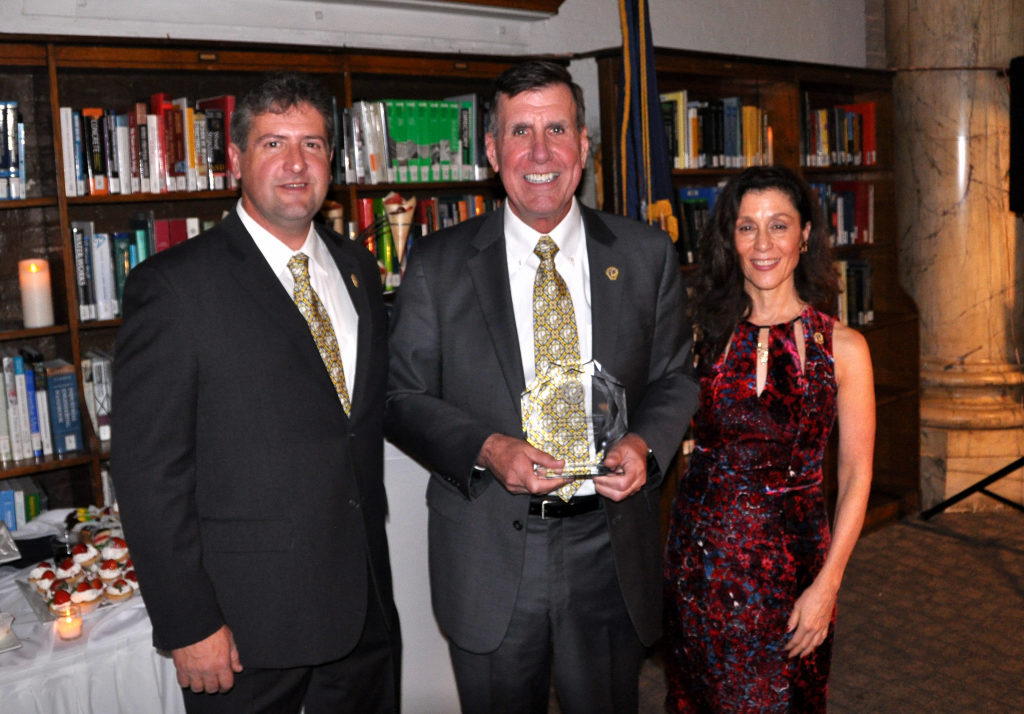
Above: Dan Holohan holds his 2017 Craftsmanship Award, with Society President, Gerard Drohan, Jr., and Executive Director, Victoria Dengel.
Three pipe to two pipe system
While making their way through the building, Holohan’s interest inevitably turned from 6,000 year old locks, copies of patents held by living and non-living members, and walls of books to the steam piping that runs from floor to ceiling. He’d also been informed that the steam system, for one reason or another, was experiencing water hammer. During the heating season, it was using $12,000 worth of municipal steam per month.
There was a large, unknown issue at play, and Holohan felt much like a sleuth turned loose in The Smithsonian. The first thing he noticed was that three pipes ran throughout the building, suggesting that the system had originally been of the vacuum variety. The radiators had since been converted to a two-pipe system (supply riser and wet return).
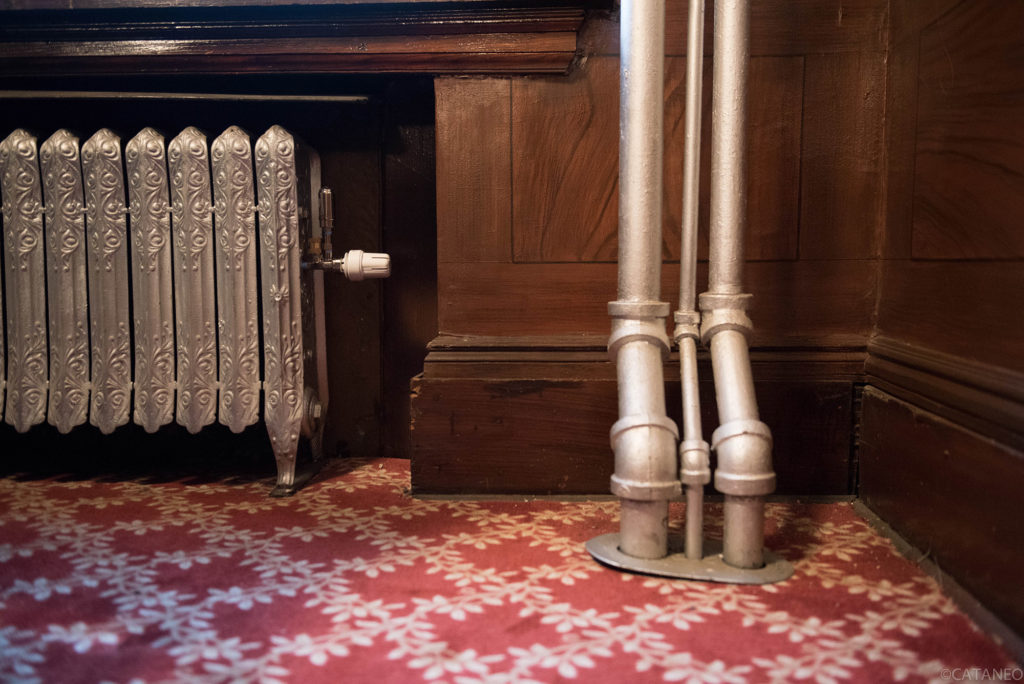
Above: Holohan was quick to notice that there were three pipes associated with the steam heating system. Photo credit: John Cataneo.
The General Society had gotten an independent engineer to look at the system shortly before Holohan’s visit, and the report suggested installing thermostatic traps on each radiator. This would have been an expensive, unsuccessful “fix” to the issues at hand, cautioned Holohan.
Two giant brick-set boilers
Upon plunging into the basement, Holohan came face to face with the culprit, or culprits: two giant, coal-fired steam boilers. The boilers themselves weren’t the cause of the water hammer or massive steam bills. Rather, it was the fact that they were no longer in use. The units were taken out of service and replaced by municipal steam.
The two boilers were literally built into the bowls of the building. Called brick-set boilers, the 20-foot-long units resemble a scotch marine boiler, only shrouded completely in masonry instead of an insulated steel jacket.
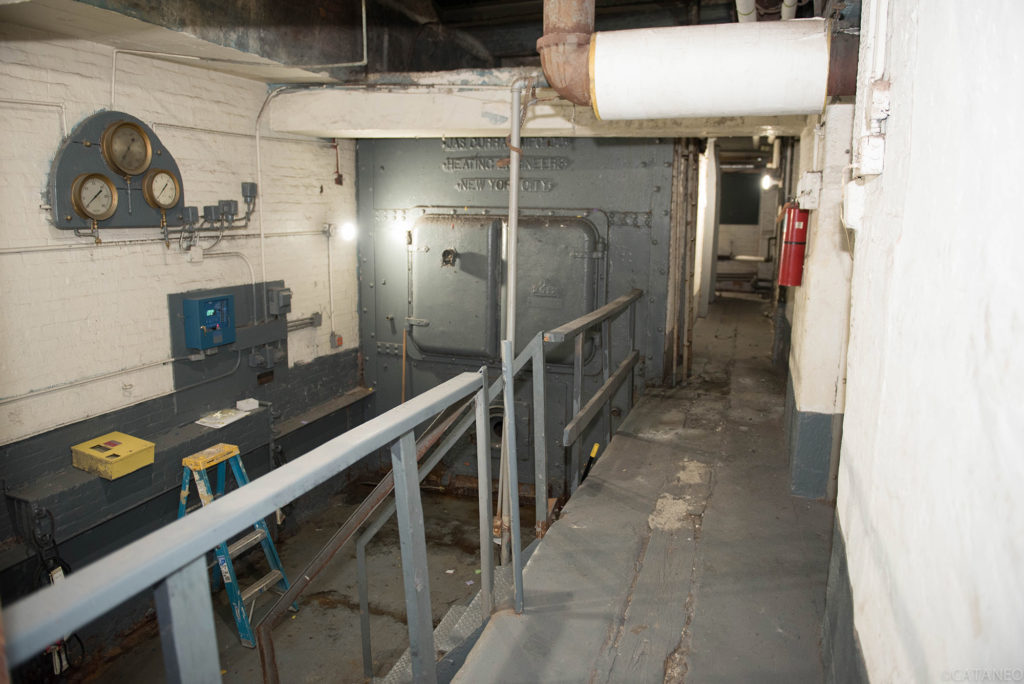
Above: The building had long been served by a pair of giant brick-set boilers. Photo credit: John Cataneo.
When the boilers were taken offline and the steam system connected to ConEd’s district steam supply, chaos ensued. The water line provided by the boilers was now non-existent, meaning that the wet condensate return lines that once equalized steam pressure and stopped the movement of steam were now dry.
The system ran non-stop, and the volume of condensate finding its way back to the mechanical room was staggering; literally hundreds of gallons each day. By coincidence, the building had a very large sump pit and two large sump pumps.
This large basin – well over 1,000 gallons in capacity, had been installed at the time of construction because much of Manhattan is built on a marsh. But, for the folks attempting to rid the building of a ridiculous amount of condensate, it served as a place to stage condensate before pumping it out to the sewer. In New York City, steam condensate can’t enter the sewer until it has cooled to 150°F. So, as a Band-Aid fix, the sump pit and its pumps were repurposed for condensate.
But the addition of condensate to a pit that already neared capacity from groundwater was a bad combination. From time to time, the pumps failed or became overwhelmed, at which point water would back up into the condensate returns, creating the awful water hammer heard throughout the building. Through quick wit and the assistance of good friends, Holohan found a temporary fix with a high-temp sump pump donated by Ferguson.
A handful of industry experts
This bought him the time needed to wrap his head around the problem and call on a few other Society members for assistance. Among the individuals who helped resolve the problem were John Cataneo, Alex Marx, Alex Weiss, P.E., James Gallo and Arthur Klansky. Each served a critical role in repairing the system, from controls to replacing steam valves.
The charge of the project was to alter the system in order to permit the installation of a false water line. Cataneo, who is co-owner of Gateway Plumbing and Heating, fabricated a vessel per Holohan’s design to trick the steam system into believing that a boiler was still present. By welding connections onto a 12” by 60” expansion tank which was installed vertically in the basement, Cataneo provided a place for condensate to accumulate, effectively putting the return lines back under water, as they should be.
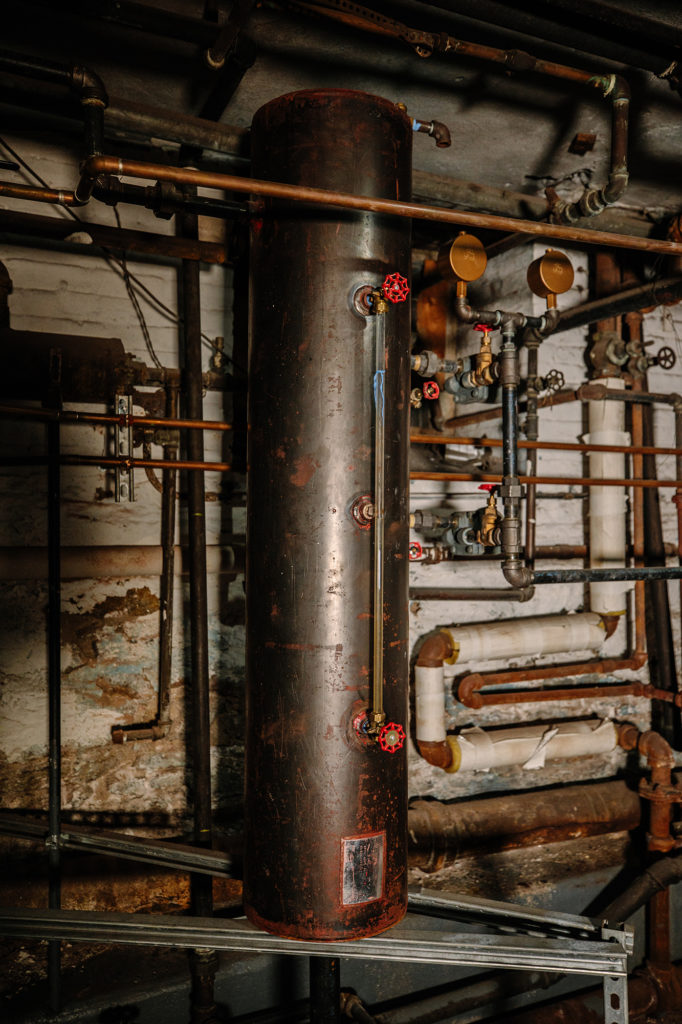
Above: Gateway Plumbing and Heating fabricated a holding vessel out of an old expansion tank to provide a new water line for the steam system.
“I spent several days on the job, along with two of our technicians, to sort out the problems,” said Cataneo. “We observed the system before we did any work, and did the same on the back end of the project to make sure we’d gotten it right.”
Throughout the building, the Gateway crew wrestled with 100-year old pipes while installing new, strategically-placed Tees. Many fittings had been in place so long the threads were fused together. To remove the old fittings without causing damage, Gateway employed a process called ‘caping,’ in which lump hammers and chisels are used.
Cataneo’s portion of the cellar work took two days to get the new piping to the correct level in the false water line or “bottle,” as Cataneo called his fabricated tank.
“There were many obstacles throughout the whole process,” said Cataneo. The folks who converted the system to district steam were well-intentioned and did quality work, but quality work means little when it’s wrong. This being pro-bono work and a labor of love, we were wary of costs yet dedicated to the idea of maximizing efficiency, minimizing noise, and normalizing operating costs for The General Society.
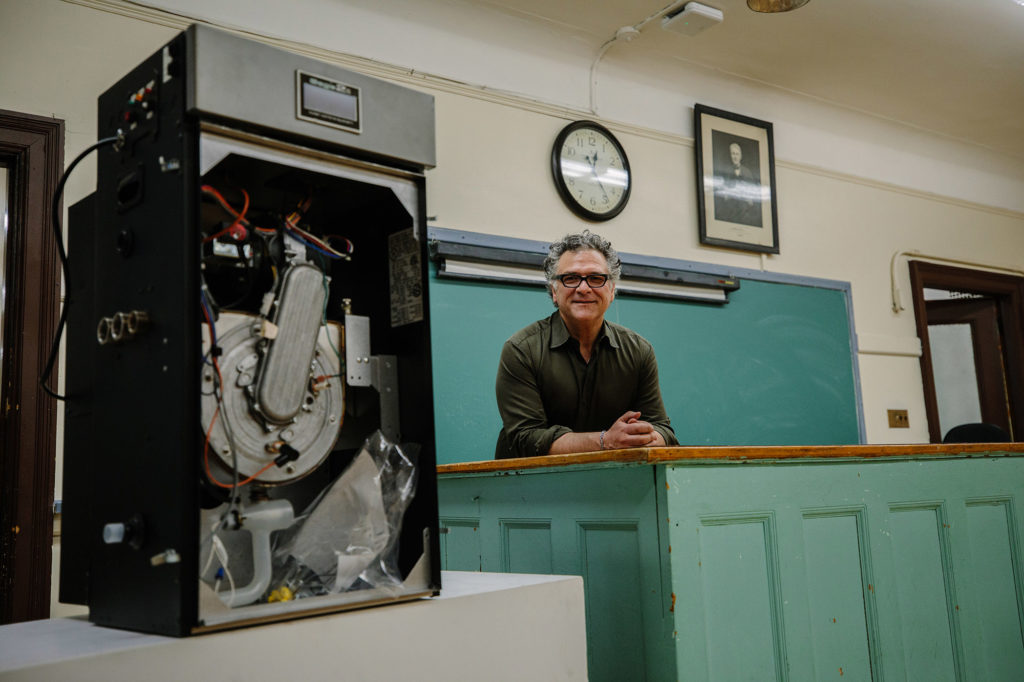
Above: John Cataneo with an Alpine condensing boiler in the classroom where he provides heating instruction at The General Society of Mechanics and Tradesmen.
Astonishing results
Changes were made to controls, radiators, and steam valves in the basement, among other things. Two, steam-to-water, shell-and-tube heat exchangers were also installed to cool the condensate enough to enter the sewer, one of which pre-heats water coming into the building’s water heater. Much of the product used in the project was donated by companies like Tunstal, Barnes & Jones, Taco and Ferguson.
Ultimately, the team effort yielded a quiet, controllable steam system that now uses 43 percent less municipal steam. In fact, ConEd was so jarred by the drop in steam usage that they changed the steam meter because they figured something must be awry. They soon learned that it was just the work of some (really smart) Mechanics and Tradesmen!
For the sake of brevity, this article fails to mention many of the interesting facets of the retrofit. We urge you to visit HeatingHelp.com and read Dan Holohan’s splendid, comprehensive write-up of the project.

